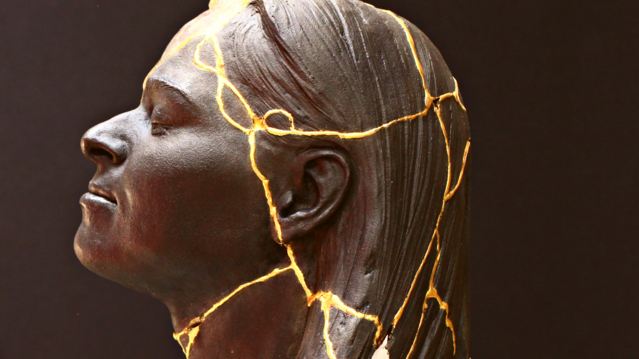Trauma
How to Heal From Stress and Trauma: Lessons From Kintsugi
When there is no going back to the old, how can we restore our lives? With gold.
Posted March 23, 2022 Reviewed by Jessica Schrader

In the last two years, the world has changed dramatically and challenged many of us beyond our expectations. The cracks of stress, strain, and trauma are showing more and more in our lives, work, and relationships.
And unless we lived in a bubble, we likely have had some other hard times in our lives. Perhaps the pandemic just widened the cracks—dissatisfactions, anxieties, and insecurities—that existed before.
Some cracks are on the outside—physical changes and work resume gaps, abandoned plans, and hastily executed alternatives. Some are on the inside—disappointments and regrets, grief over what was lost, and self-doubt that comes from failures. And that fatigue that feels like more than fatigue.
We may want to go back to some aspects of the pre-2020 "normal." And we dread the return to some other old patterns and ways of working and living. One minute we might be searching for the "old me" and next we are wondering about the “new me.”
But there is no going back. The "old normal" no longer exists. And to be honest, do you even recognize that person in the mirror?
We are not the same. And accepting that might be a start of healing and growth.
Whether discovering you can do things you never thought were possible, or doors closing on some of the possibilities, we are different. In good ways, in frustrating ways, in heartbreaking ways, we have changed. We have new habits, new interests, newly found bravery, and perhaps new fears.
Some things in our lives are fractured or chipped—perhaps our confidence or our motivation? Perhaps our trust in the world of work? Other things are almost broken off, like some of our neglected connections.
But broken things do not need to remain broken. Change is wired into our brain, and that change does not have to be negative. We can create positive change, even out of terrible events like wars and natural disasters. It is called post-traumatic growth.
Brokenness can be a starting point of beauty.
We can create something better and stronger than the old normal or the old "us."
Do you know what those practicing the Japanese art of kintsugi do with broken pottery?
Instead of trying to glue it together as if nothing has even happened, they repair it in a way that makes filled cracks and old fractures very much visible. They highlight the seams with gold or other precious metals.
The cup or the teapot is still functional. But not the same. The change is visible. The change and the experience of brokenness and re-creation are worn proudly. The item is more valuable than it was before—and not just because of gold, but because of the care that went into its restoration. Because of the new kind of strength and the new kind of beauty that comes from this restoration.
In the world of disposable things, it is easy to value the new. It is easy to overlook the value of repaired things. But the art of kintsugi reminds us that the repaired and the timeless can be better than the new.
People are not plastic cups. When we change, we learn. When we struggle, we grow. When we repair our lives, we gain new strength and the ability to mend the aspects of our lives and the aspects of our world that need to be fixed.
We gain wisdom and beauty and emerge stronger than before. We restore ourselves and advocate for others. We shed the layers of pretense and create a new kind of social bond, perhaps remote—yet more authentic than ever. The gold we use for the repair is caring and kindness toward others and ourselves.
Renewed can be stronger than the original—and that can give us confidence and motivation. We don’t need to go back to something that no longer inspires us. We can trust our renewed selves and our growth.
We can turn our brokenness into beauty with kintsugi.
A version of this post was also published in the Best Work for your Brain newsletter on Jan. 30, 2022.


